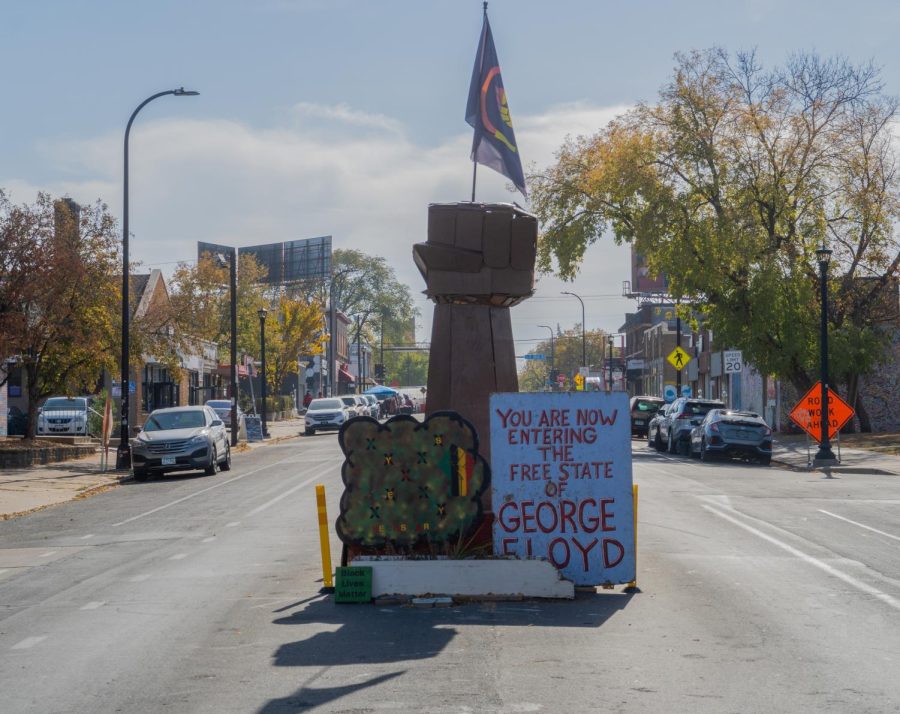Minneapolis hosted a second open house in October at Phelps Park to discuss a project with community members that would re-envision the memorial for George Floyd, or George Perry Floyd Square.
Former Minneapolis Police Officer Derek Chauvin killed George Floyd on May 25, 2020. Shortly after his murder, community members built a memorial at the site of his death for him and others who were killed by law enforcement nationwide. The city is working with the community to redesign and reconstruct George Perry Floyd Square, located at the 38th Street and Chicago Avenue intersection, to become a permanent site for a memorial.
“The memorial is important for the community because of what the impact of the murder of George Floyd had on not just the community, but the whole world,” Phi Khalar, a community member who has been involved with George Floyd Square since May 2020, said.
The names of people who law enforcement killed are written on roads, crosswalks and traffic lights all over the intersection and people from around the world are able continue to come see their loved ones’ memorialized, Khalar said.
The memorial is unique to Minneapolis and is becoming a destination spot for people coming to visit, according to Khalar.
Alexander Kado is a transportation planner and project manager with Minneapolis Public Works. Construction for the project could start as early as 2024, according to Kado.
Kado said the city will decide if the intersection will be pedestrian only and if it will have car access or just bus lanes.
“Before the murder of George Floyd, it was a heavy arterial road with a lot of vehicle traffic,” Kado said. “Now it has a different sense of ownership by community members.”
People in the community, around the country and the world care about this intersection, Kado said. This project gives people an opportunity to voice their concerns and opinions about the intersection in the city’s decision making process.
While the city is mainly focusing on close community members that are the most affected by this intersection, it is giving anyone the opportunity to be a part of this project, Kado said.
The people have re-envisioned this corner on their own, according to Jenny Jones, a community member and volunteer caretaker for the George Floyd memorial. This memorial organically grew from community members and people who have visited the memorial from around the world, Jones said.
Jones said she would like to see the space as a pedestrian only area, with no car traffic on the “sacred ground.”
“The way I view it is that the city killed a man,” Jones said. “It’s not up to the city to decide how that man should be memorialized.”














